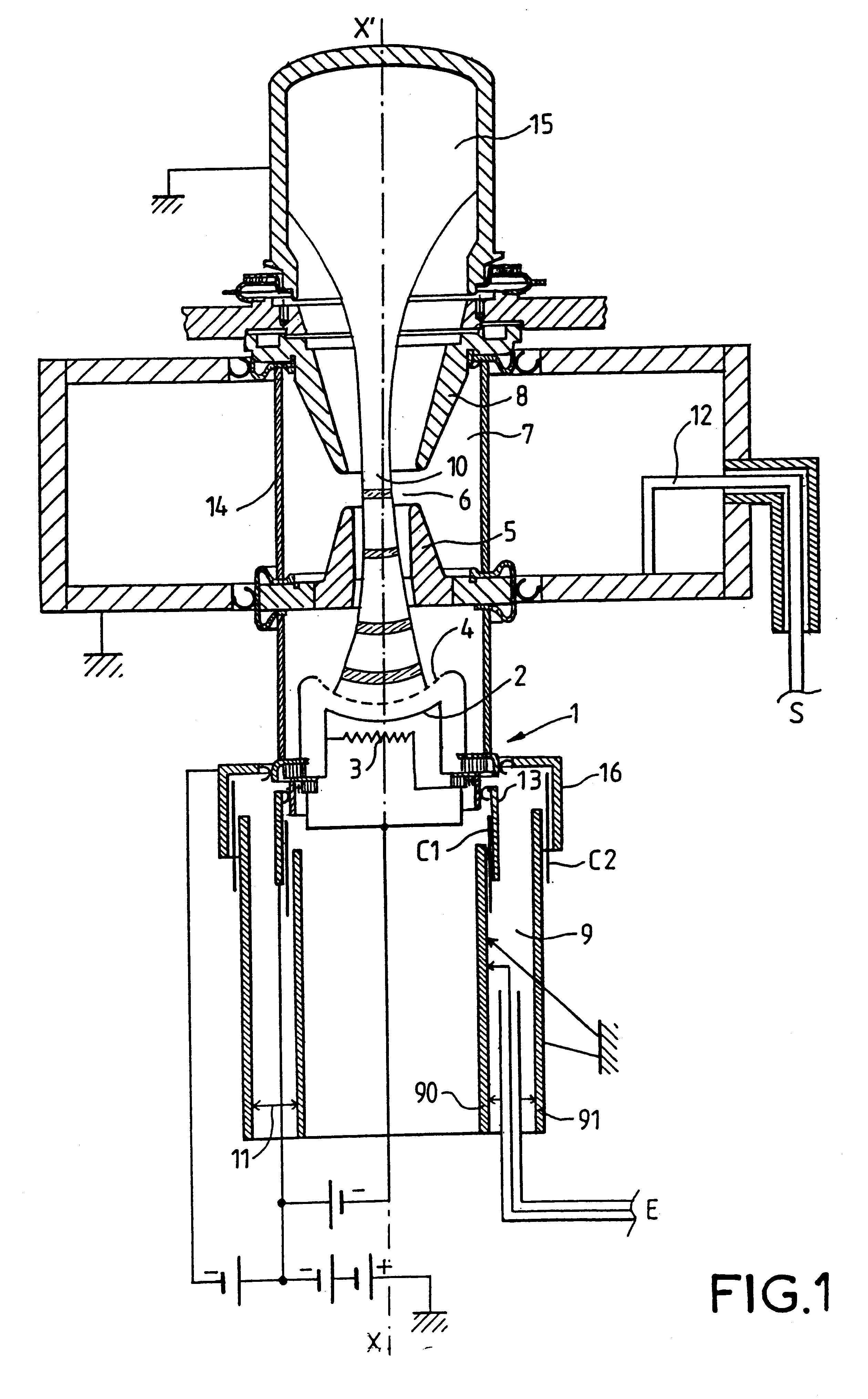Very high power radiofrequency generator
- Summary
- Abstract
- Description
- Claims
- Application Information
AI Technical Summary
Problems solved by technology
Method used
Image
Examples
Embodiment Construction
The various characteristics of the generator according to the invention could be obtained with configurations other than those shown in FIGS. 2 and 3. In particular, other combinations of the configurations shown in FIGS. 2 and 3 are possible.
The radiofrequency generator according to the invention illustrated in FIGS. 2 and 3 includes means CE to produce an input radiofrequency signal E to be amplified and means 36 to feed it to an IOT referenced K which supplies an output signal S whose power is amplified compared with the input signal E. The IOT K bears some resemblance to the classical tube described with reference to FIG. 1. The gun 25 is found again with a cathode 26 equipped with a heater 27 and a grid 28 separated from the cathode 26. The function of the gun 25 is to emit an electron beam (not shown for reasons of clarity) via an anode 29 electrically isolated from the gun 25 by a dielectric sleeve 30. The anode 29 in the form of a drift tube ends with a lip 31 which, in comb...
PUM
 Login to View More
Login to View More Abstract
Description
Claims
Application Information
 Login to View More
Login to View More - R&D
- Intellectual Property
- Life Sciences
- Materials
- Tech Scout
- Unparalleled Data Quality
- Higher Quality Content
- 60% Fewer Hallucinations
Browse by: Latest US Patents, China's latest patents, Technical Efficacy Thesaurus, Application Domain, Technology Topic, Popular Technical Reports.
© 2025 PatSnap. All rights reserved.Legal|Privacy policy|Modern Slavery Act Transparency Statement|Sitemap|About US| Contact US: help@patsnap.com



